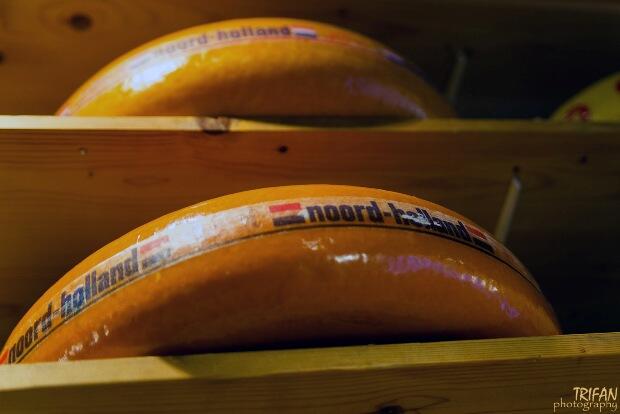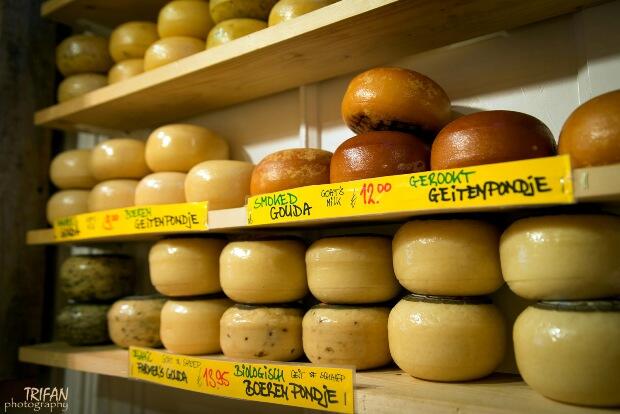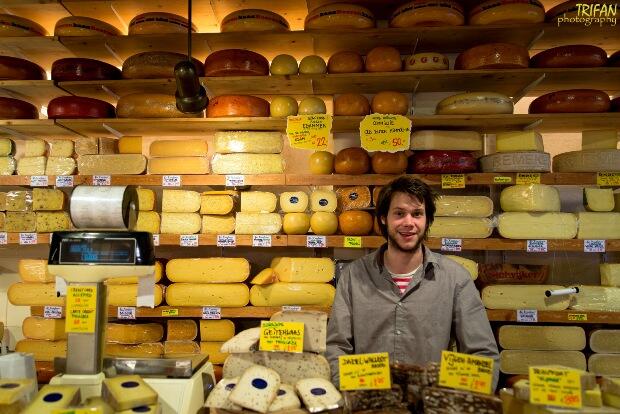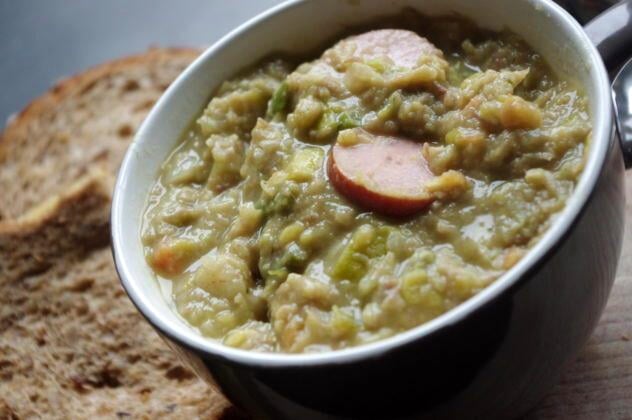Before we even get into the nitty gritty of Dutch cheese, it’s best to start with how not to pronounce it. And I’m talking gouda here. Just to get things straight, Gouda is not pronounced “goo-da”. The Dutch “g” is a tricky beast: it’s a guttural sound much like clearing your throat (I know – delightful); or, if that’s not quite working, replace the guttural “g” with a softer “h”. For the “ou,” think “Ouw! I stubbed my toe.” The “da” is straightforward. Now try it all together: “(G)h-ouw-da!”

Why Dutch Cheeses?
The Dutch cheese-making tradition is believed to date back to pre-Christian times, and archeologists have found cheese-making equipment from 200 BC. That’s over 2,000 years of cheese making! And it’s what makes the Dutch experts in the field.
Gouda is the most popular cheese exported by the Netherlands, and is known for its mild, almost sweet flavor. It is also one of the most popular and versatile cheeses worldwide. Since all cheese starts with milk, this means that Holland is quite a milky country: its lush grass and mild temperatures make excellent pasture for cows. You can’t miss these black-and-white bovines grazing on green grasses if you travel through the countryside outside Amsterdam.
**********************
Like this? Check out Eating Europe on social media!
With Dutch foodie ideas, mouthwatering pics and much more, we’re on…
Facebook | Twitter | Pinterest | Instagram
**********************
Where Is Gouda Anyway?
Gouda is also a town in southern Holland, after which the cheese was named. Certain towns in the Middle Ages gained exclusive rights to cheese weighing and selling, and Gouda was one of them (as well as Edam, another Dutch town and cheese). The cheese makers and farmers would bring their wheels of gouda to have them weighed in the Weigh House. They would then try to sell them in the city’s square in front of the town hall. In Gouda, this tradition still happens on Thursday mornings during the summer months, where you can see the wheels of gouda wrapped in their wax rind and stacked on the cobblestones in front of the town hall. In 2014, the Gouda Cheese Market takes place every Thursday from April 3 to August 28, from 10 am to 12:30 pm.

Which Gouda Cheese?
There are seven different classifications of gouda that depend on the age of the cheese. The thing to remember is that the younger the cheese, the creamier the texture; as it gets older, the cheese acquires a hard, crumbly texture and a sharper, somewhat nuttier taste.
Graskaas is made from the first spring milking after the cows have eaten the tender spring fodder. This milk is the creamiest of the year and produces a rich and creamy cheese. The best known is the Beemster Graskaas, which has a green wax rind. Young gouda or jonge kaas is aged for just 4 weeks, and jong belegen kaas for 2 months. These are the goudas that are often used in cheese sandwiches, or a broodje kaas, in Holland. The older cheeses are extra belegen (aged 7 to 8 months), oude kaas (aged 10 to 12 months), and overjarig (aged 1 to 2 years).
Also good to know is that gouda can refer to cheese that hasn’t necessarily been made in Holland. If you are looking for cheese with a Protected Geographical Indication, which guarantees that the cheese is made in Holland using milk from Holland, then try anything labeled Noord-Hollandse Gouda or Boerenkaas, which means farmer’s cheese.
Is There More to Cheese in Holland Than Just Gouda?
So now that you’ve got your gouda straightened out, you’re probably wondering if that’s the only cheese that Holland has. The second most popular cheese in Holland is Edam. Edam has a spherical shape and, like gouda, is named after the town of Edam. Another popular cheese in the Netherlands is Leidse kaas, which comes from Leiden and is dotted with cumin seeds. Maasdamer is a Swiss-style cheese that’s full of holes.

Where to Find Cheese in Amsterdam?
If your trip to Holland doesn’t take you outside of Amsterdam and you still want to try some of the famous Dutch cheeses, then head to De Kaaskamer, which translates as the Cheese Room. Here you can find young, old, local, cow, goat, and sheep cheeses that can be shrink-wrapped for you to carry home. Or try one of the local markets where there are plenty of excellent cheese mongers to choose from. Alternatively, join one of our food tours to taste three different types of cheese, from young to extra mature. Wherever you wander, you shouldn’t have a problem stumbling on some great gouda in Amsterdam.





